Leatherneck Square
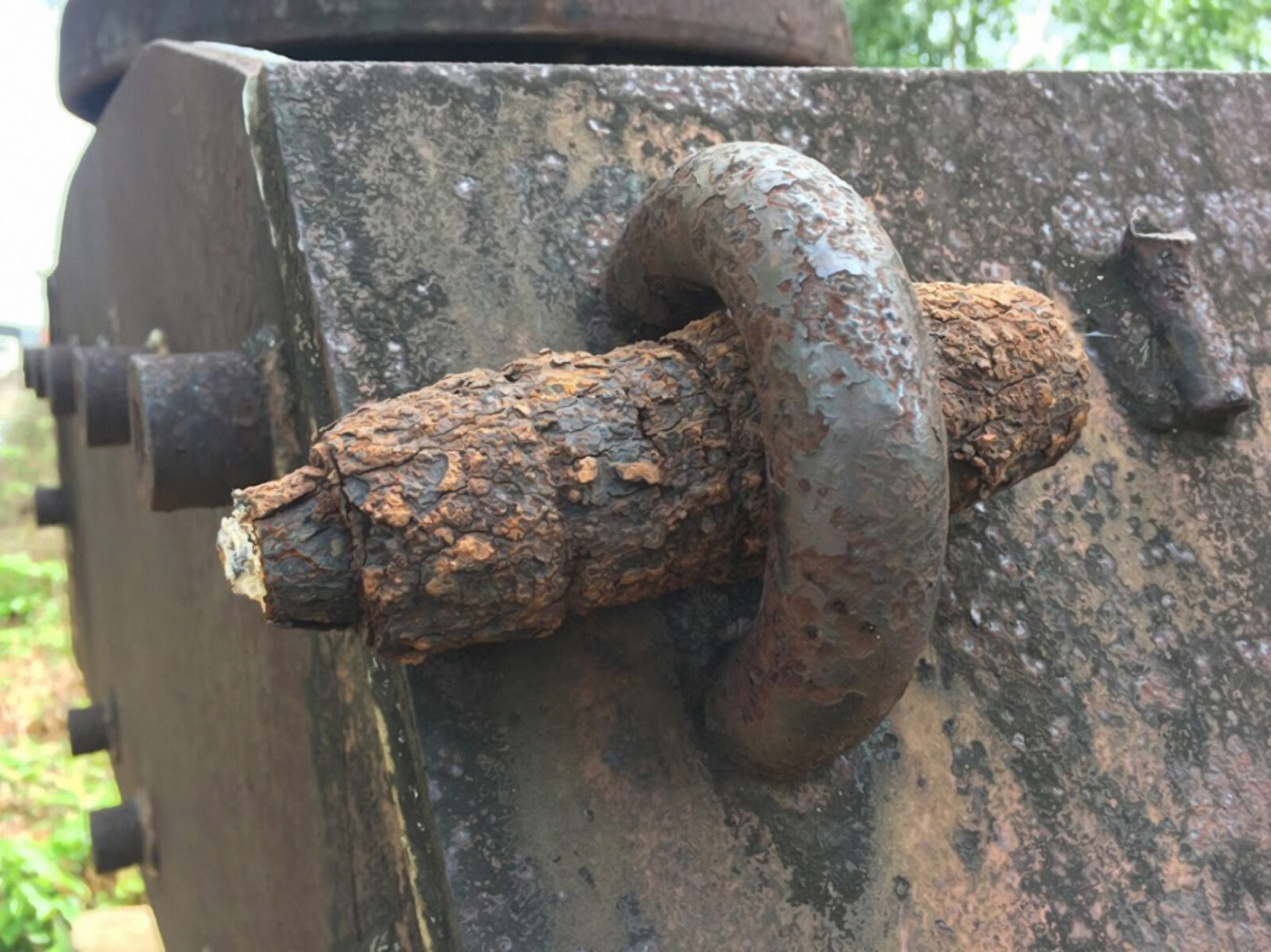
Leatherneck Square was an area just south of the Vietnam Demilitarized Zone and close to the country’s coastline. The area was nicknamed “Leatherneck Square” due to the number of United States Marines that served here. It was USMC territory. Con Thien Firebase, Gio Linh Firebase, Cam Lo, and Dong Ha Combat Base comprised the four corners of this square-shaped real estate, which had a length of 6 miles and a height of 9 miles. As Leatherneck square abutted the DMZ and was a mere mile or so from North Vietnamese troops that were operating in the Demilitarized Zone, this was the site of some of the heaviest combat of the war. Between 1967 and 1969, 1,419 Marines and Navy Corpsmen were killed in action here and 9,265 Marines and Corpsmen were wounded here. The Government of Vietnam’s tally is 7,563 NVA killed here.
Dong Ha Combat Base
In the southeast corner one encounters a large town that was designated the provincial capital after the previous capital Quang Tri was destroyed in 1972. When the Marines first arrived in 1966, Dong Ha was a village. By 1968, nearly the whole 3rd Marine Division was stationed here, and the Seabees built the Dong Ha Combat Base. After the war, the city grew up around the former base, but the evidence of this large USMC presence is still there. The former Dong Ha Combat Base runway is now a street in a residential neighborhood. Like in many other places that once housed an airstrip, the Vietnamese government preserved and turned over the runway to vehicular traffic. It’s still there and is a street lined with cafes and restaurants.
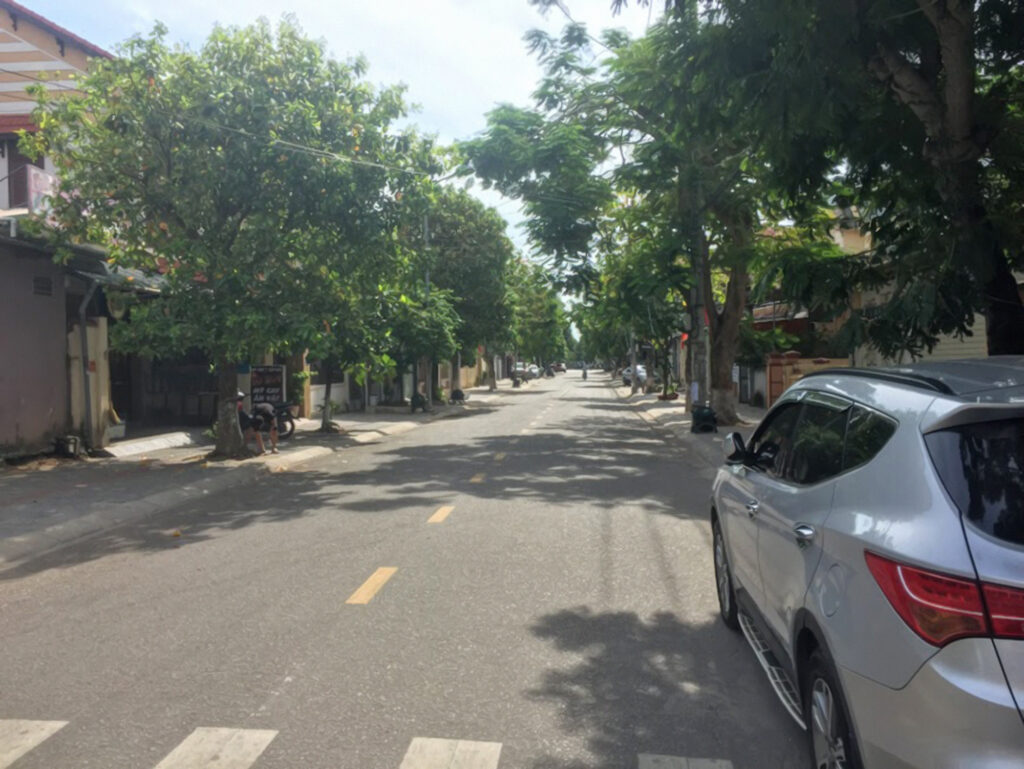
More captivating still is that one of the original aircraft hangars from the base is preserved and still sits in a densely populated labyrinth residential section of Dong Ha. The alleys in this part of the city are barely wide enough to accommodate a car. Finding the hangar takes some skill as a neighborhood has grown up around it. After passing through a narrow alley a small square opens up, surrounded by homes.
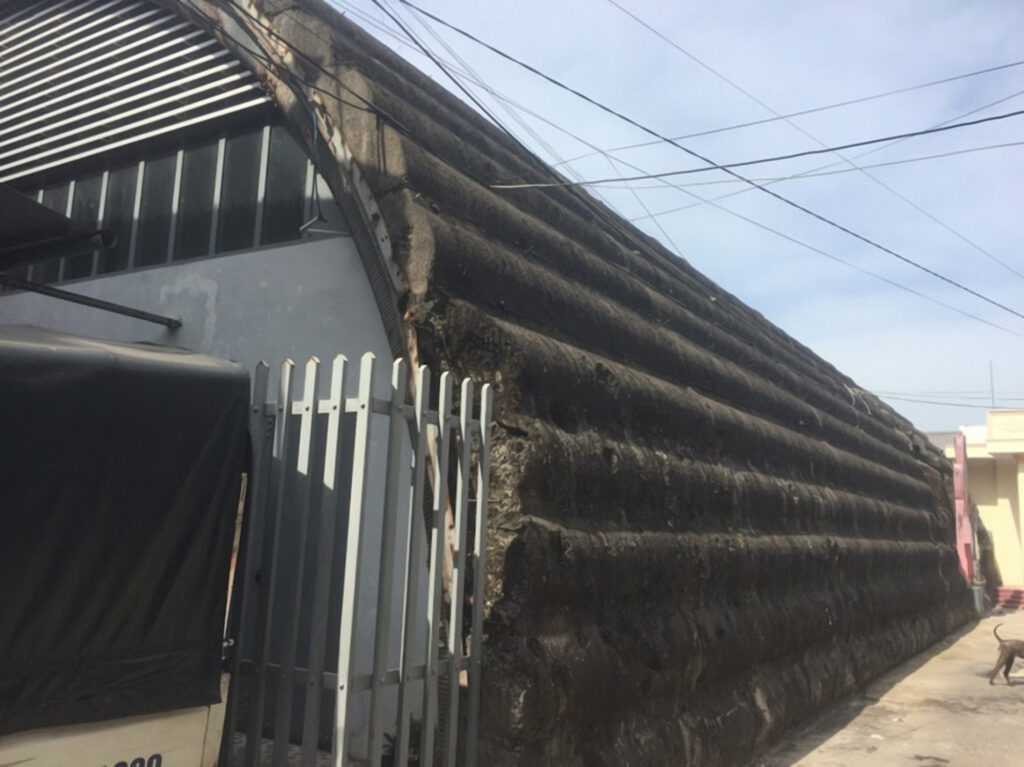
Sitting in the middle is a hangar built by US engineers and Seabees during the war. A concrete aircraft hangar, perfectly preserved. The reason why it was never torn down is because on 28 April 1972, the PAVN overran Dong Ha during the Easter Offensive and raised a victory flag on top of the hangar. The hangar is filled with bullet holes and shrapnel scars.
Gio Linh
The northernmost Corners of Leatherneck Square, Con Thien and Gio Linh firebases, were right on the Demilitarized Zone and two or three kilometers south of the border with North Vietnam. Marines posted to these bases experienced frequent NVA infiltrations and shelling from NVA artillery that was actually located within the supposed demilitarized zone a mere kilometer away.
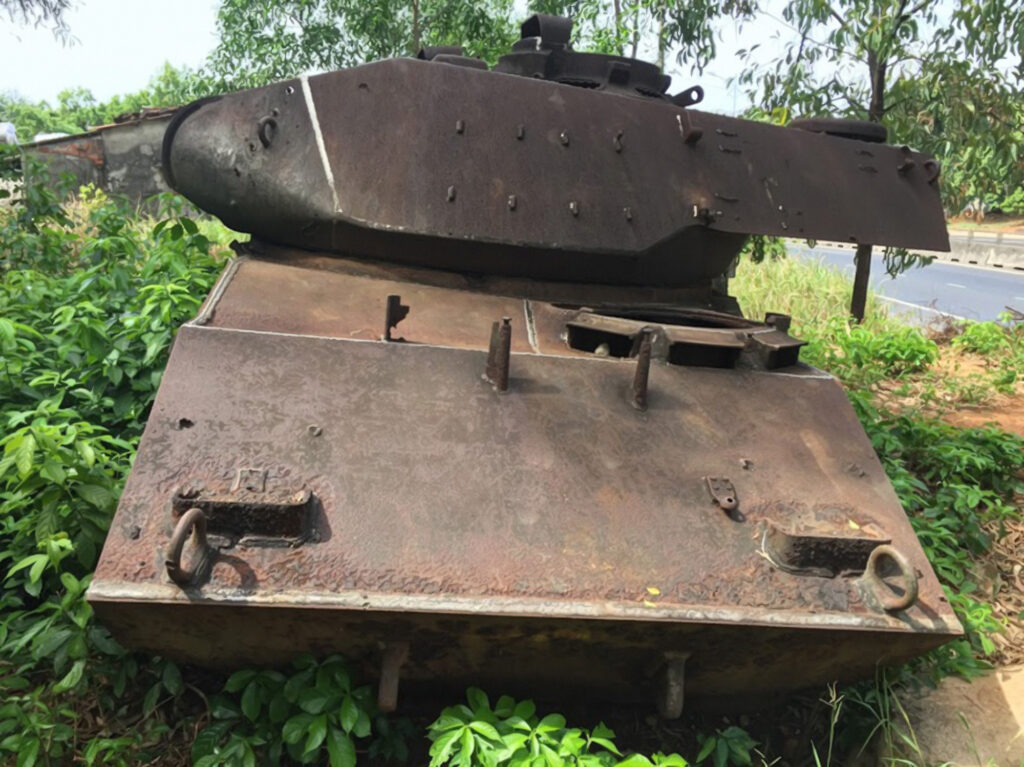
They were dangerous places for Marines to reside and make a living. Gio Linh sits astride Highway 1 behind some tree cover that separates it from the highway’s steady traffic. A burned-out ARVN tank originally donated by the United States Army marks the spot. Passing through the tree cover, a massive cassava field is revealed. This could be anywhere in Central Vietnam, until one notices that there are 3 or 4 concrete bunkers still on the site, overgrown with weeds and trees. Cassava farmers place unexploded ordnance uncovered from tilling the fields on top of the bunkers. There was even an unexploded mortar shell sitting on the burned-out tank.
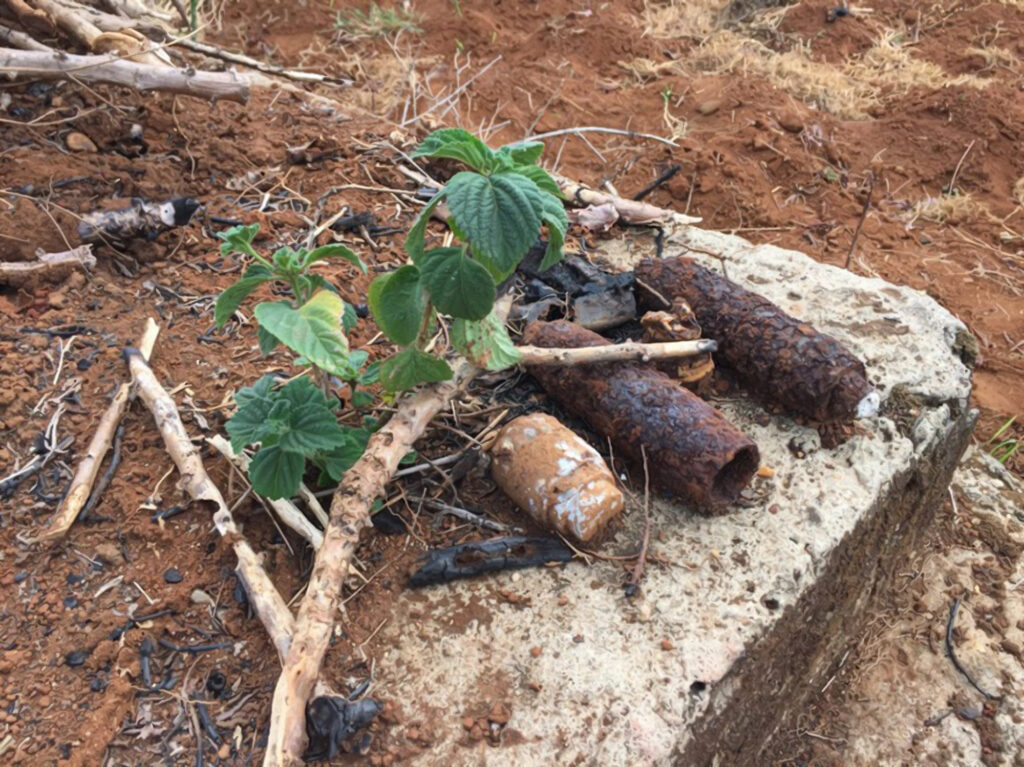
Con Thien
The Hill of Angels is a collection of three low rise hills that have a view onto the Ben Hai River that separated North and South Vietnam. Like Gio Linh due east, it sits right on the Demilitarized Zone, a 54 square mile area was unsurprisingly one of the most hostile during the war. Marines at both Gio Linh and Con Thien were occupied with major engagements throughout each year that the United States was here, particularly from 1967-1969. Con Thien was a strong point along the McNamara Line meant to interdict PAVN crossings of the DMZ. The hills offered the USMC a clear vista of 15 km east to the coast and north into North Vietnam. Yet the firebase was well within range of hidden PAVN artillery within and north of the DMZ.
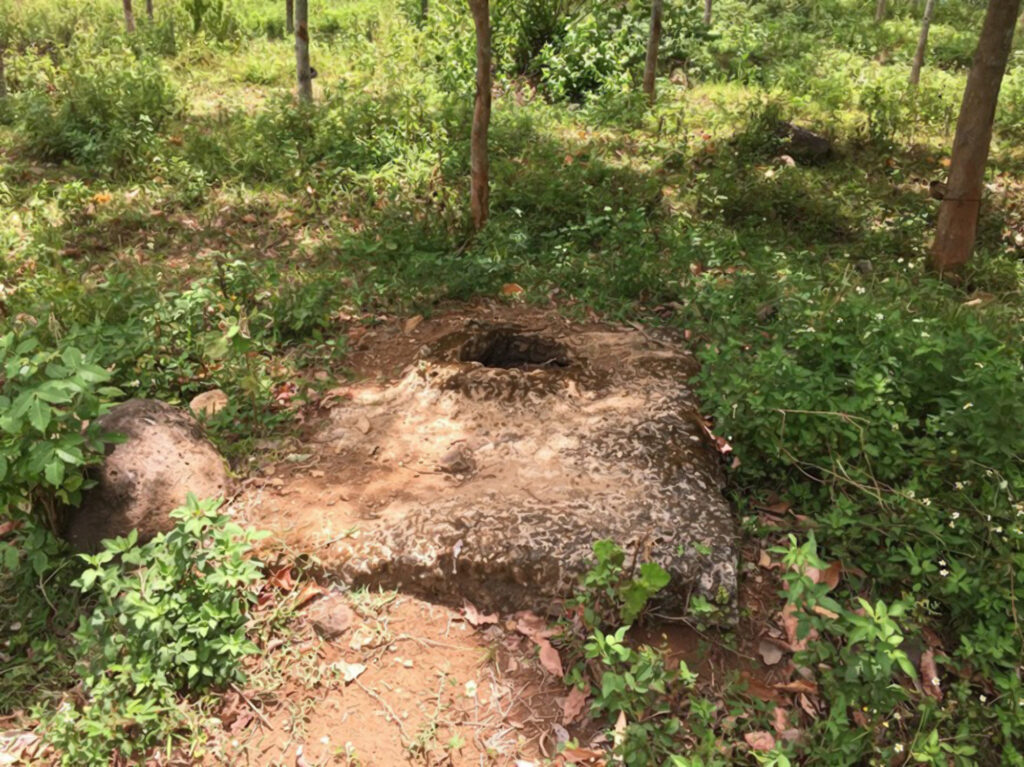
Major combat operations launched from Gio Linh and Con Thien included Operation Prairie III/IV, Hickory, Cimarron, Buffalo, Kingfisher, and Kentucky. When one also tallies the many sieges, firefights, search and destroy missions, probes, and artillery exchanges, the list is endless. In late 1967, the PAVN laid a devastating siege to Con Thien in an effort to distract the United States from the upcoming Tet Offensive, which would be waged in virtually every South Vietnamese city and town simultaneously.
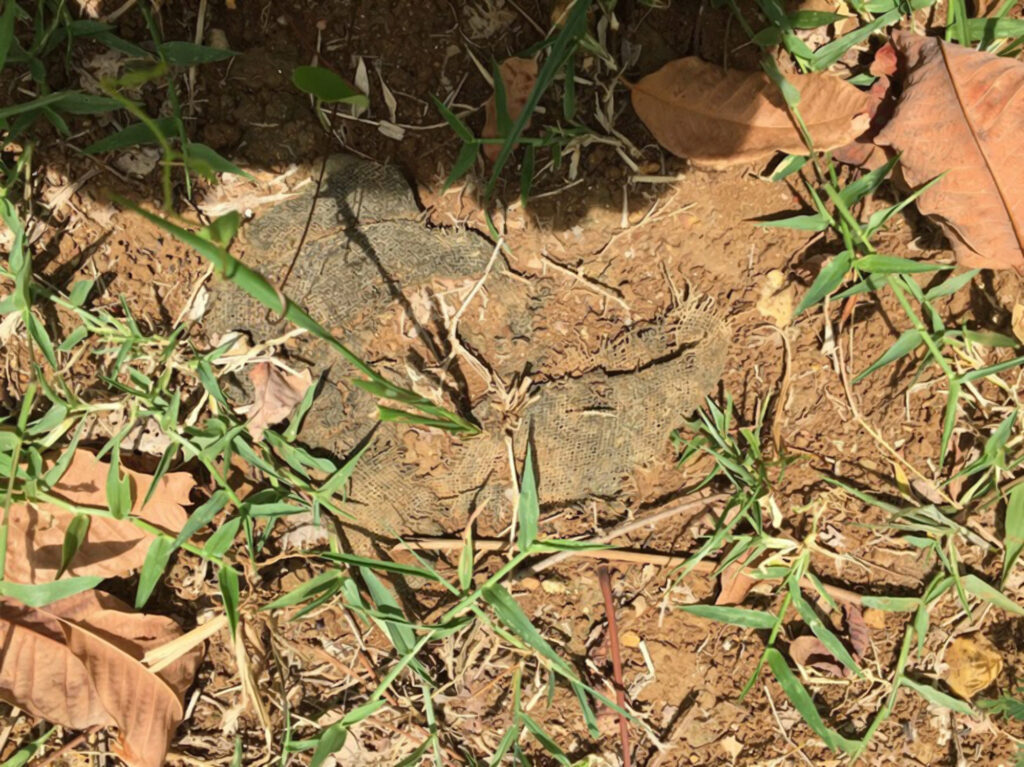
One of Con Thien’s three hills is more accessible than the others. It starts with a quiet meadow and leads up and into a hillside rubber plantation. Making your way up the hill, you will begin encountering war garbage that’s sat here for 50 years: sandbags, shredded ponchos, shell casings, plastic spoons, medicine bottles, pieces of barbed wire, and plastic forks. On my visit I struck gold: an aluminum crushed Budweiser can. That’s the Holy Grail of DMZ garbage.
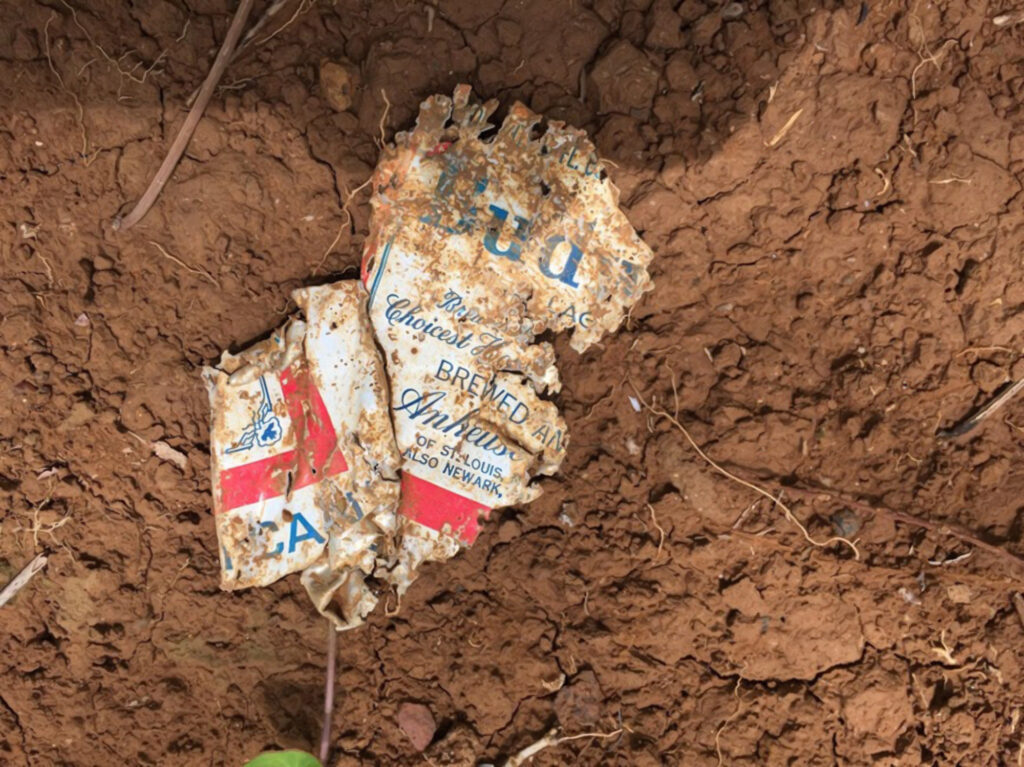
US forces drank a lot of Budweiser beer in Vietnam. Budweiser, Schlitz, Pabst Blue Ribbon and other favorite brands would get helicoptered into these places. The empty cans were tossed. Most of these cans have long since been picked up by scrap collectors. But given the sheer amount of Budweiser that the Americans drank in Vietnam, quite a few of those cans surely remain buried under cassava plants. And they get overturned once in a while.
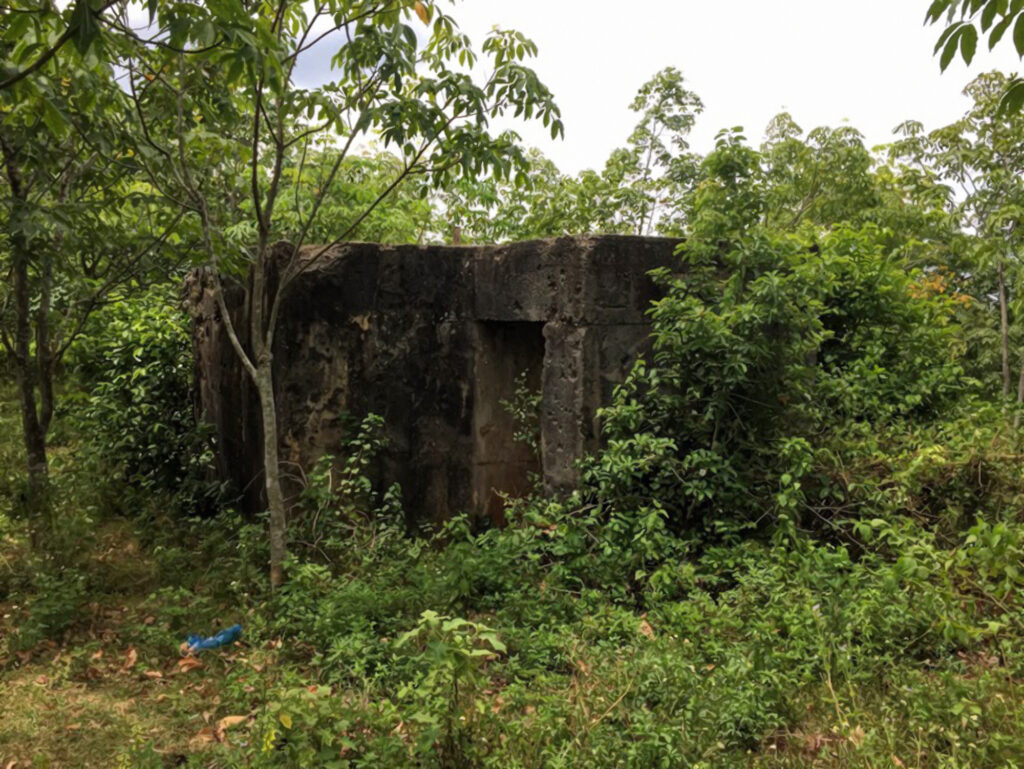
At the summit of this hill are bomb craters, trenches, and other remnants of battles carved into the ground. There is also a large well-preserved concrete bunker on top of the hill. The bunker sits there, lonely, as evidence of the magnitude of history that took place on this small hilltop. Unlike Khe Sanh at the opposite end of Highway 9, Con Thien doesn’t get visitors very often. Yet it’s among the most notorious sites from the war. There was something a bit eerie about that hilltop. I was with a guide, and we split up. It was a hot and bright day, but the area is shaded by so many rubber trees, it felt quite dark there. In 1967-68, this hill would have been devoid of all trees, cover, and shade. I walked the perimeter of the hill and as the topography of the place, its leftover ditches and scars revealed themselves to me, I did feel a certain residual energy to Con Thien that I haven’t felt elsewhere. It’s an isolated place, but not unwelcoming. At the far end of the perimeter, I looked back and made out the deserted bunker in the distance. In the bunker and in the trenches around me, I’m sure more than a few terrified Marines waited out NVA artillery strikes.
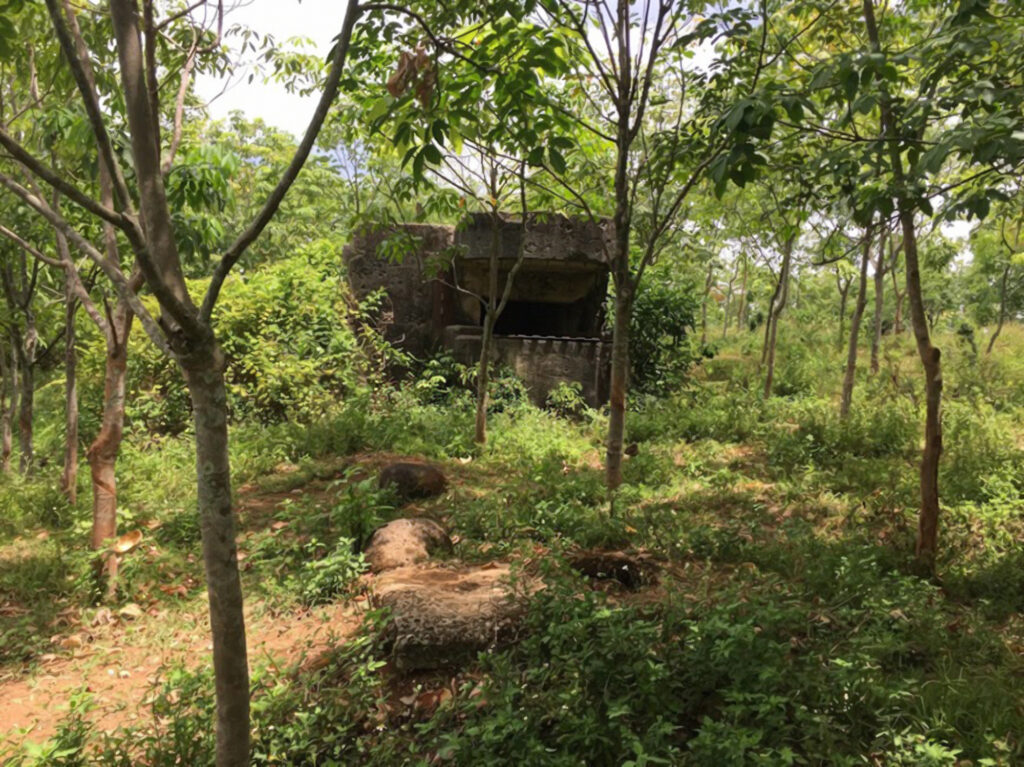
Back at the bunker, one truly gains an appreciation for these structures. They were solid reinforced concrete. Walls maybe 12 inches thick. Nobody knows when or if someone is going to come and remove it, but there is a concrete plaque in the ground in front of the bunker. In Vietnamese was written CẤM PHÁ HOẠI‘, or ‘VANDALISM PROHIBITED.’ Presumably an order from the local government, it is reassuring.
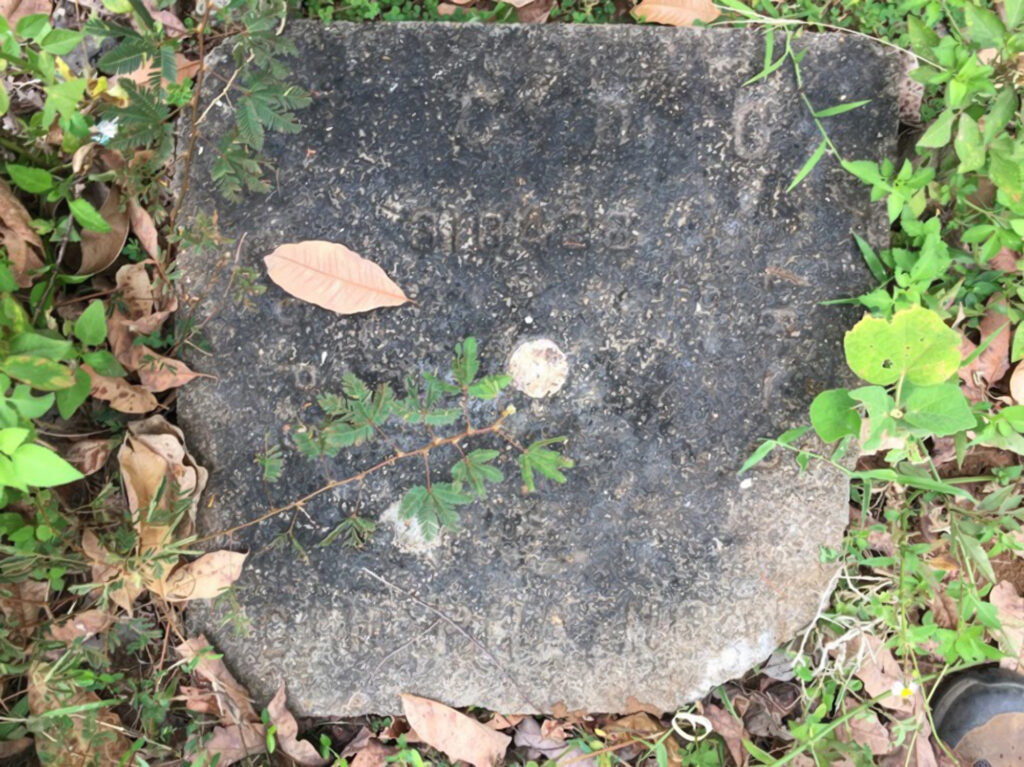
Next up is a section of countryside between Con Thien and Gio Linh that United States Marines called ‘The Marketplace.’ Because Gio Linh and Con Thien sat amidst major NVA infiltration routes, this area was always highly trafficked. The NVA staged numerous attacks from the Marketplace on Con Thien in 1967. In late 1967 and early 1968, Marines were ordered to clear the Marketplace in Operation Buffalo and Operation Hickory. Marine units entered into an ambush along a 300 meter stretch of dirt road in this location, they took major casualties. Today this spot is quiet. Apart from the odd farmhouse, it is meadow and jungle.
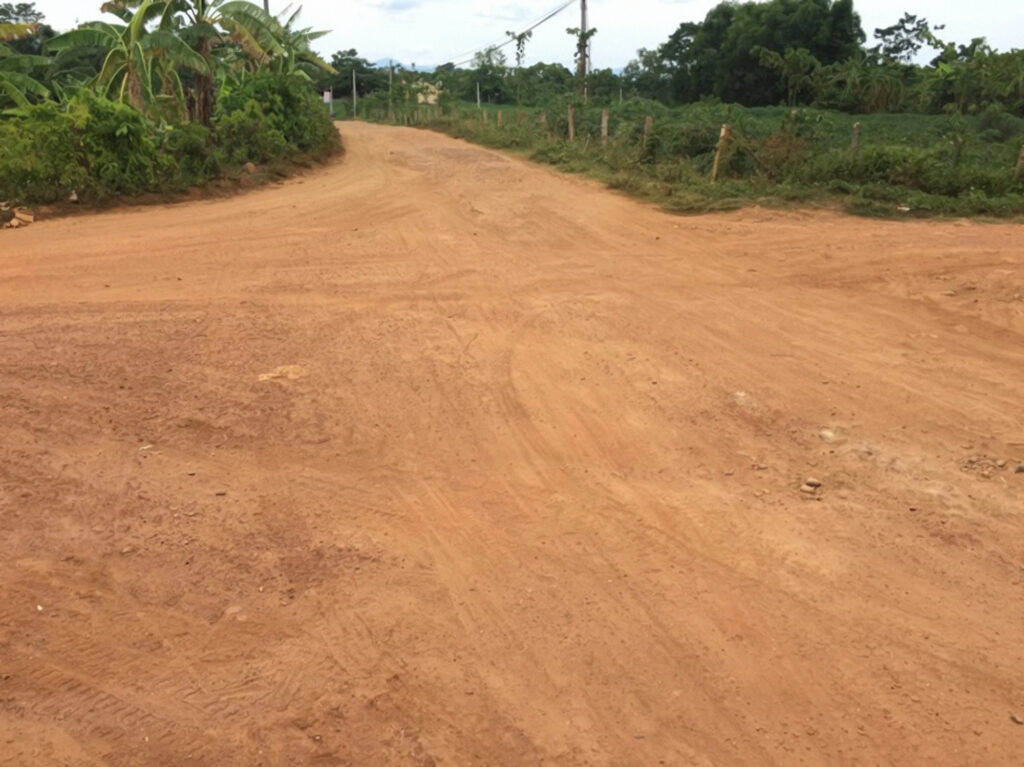
The dirt road still exists, but there’s little traffic. Near the road is a small cemetery for liệt sĩ, or martyrs. NVA or Viet Cong killed in action, typically from the local area. The community here built it after the war. After the ambush and withdrawal, more units were ordered into the area to pursue the NVA in force, and with tanks. In a tense interview from the Ken Burns Vietnam War documentary, one Marine recounted the mission. They were patrolling north from Con Thien on narrow dirt roads and encountered a bridge that was too small to accommodate the tanks. They were forced to turn around and retrace their steps, which is anything but best practice in combat. They were ambushed again. “It wasn’t a good day,” the Marine understatedly concludes.
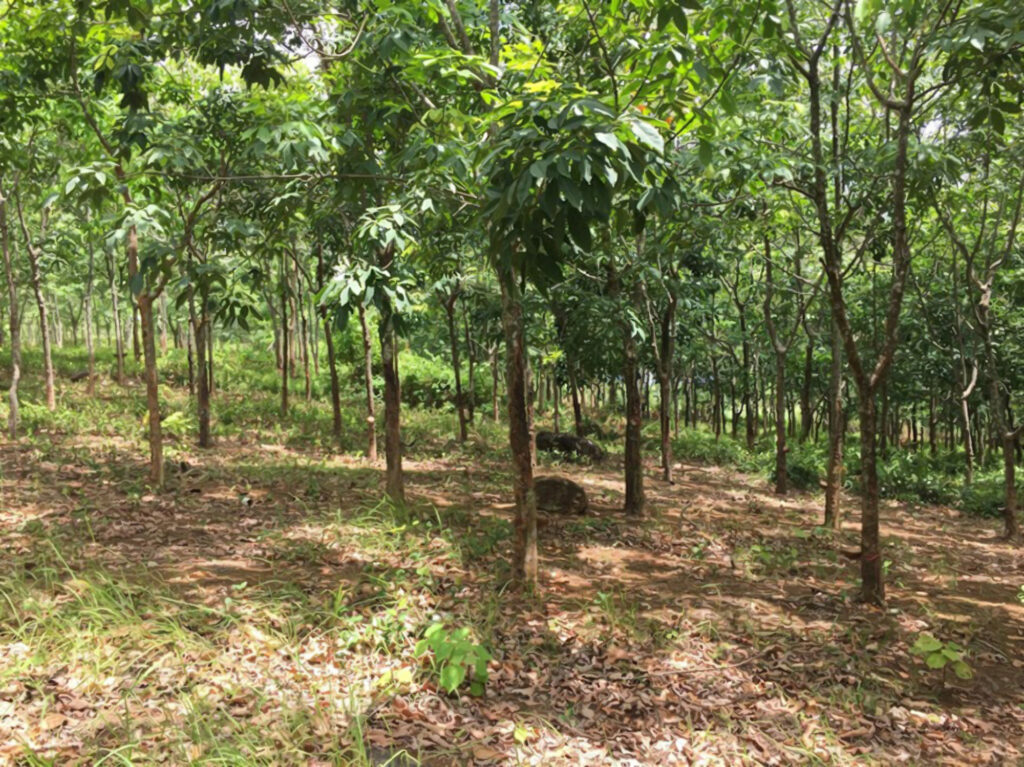
Cam Lo Combat Base
Is the southwest and final corner in Leatherneck Square was the Cam Lo Combat Base situated from 1966 onwards. The base was several miles west of Dong Ha, and sat on a hilltop. Marine units participating in Operations Hastings and Prairie II, the latter of which was a sweep of the area between Cam Lo and Con Thien, launched from Cam Lo Combat Base. Cam Lo changed hands to ARVN units in January 1972. Cam Lo’s status as an ARVN combat base lasted a couple of months, as during the PAVN Easter Offensive in March, it was overrun and never returned to ARVN control. There’s nothing left of Cam Lo Combat Base today, and the town of Cam Lo has grown up out of it – schools, small shops, a post office, corner stores. As with many places from the war in modern Vietnam, there’s no marker or memory of what happened in Cam Lo.
SB
How to get there
Leatherneck Square is easily accessible to visitors, as it’s near the tourist center of Hue, and even nearer to Dong Ha. Both are on major tourist routes. Many of these sites can be visited without a guide, but the value gained from spending a half day in Leatherneck Square with someone who knows the area well is substantial.
I was with Charlie Company 1/4. We manned the C-2 Bridge in late ’67 through May of ’68. Probably the most skate duty an 03 could have in VN. It all changed for the entire 3RDMARDIV when MajGen Ray Davis took over the division in April and was aghast that his Marines were sitting mostly in defensive garrisons. There went the skate duty. Charlie and Delta 1/4 became the guinea pigs for the Marines’ new air mobile tactics based on the Army’s 101st. So in we went to LZ Loon out by the Ho Chi Minh Trail in Laos. Long story from here that can be consumed in my fighting hole buddy, Jack McLean’s two memoirs about it, Loon, A Marine Story and Found, A Veternams Story.
Semper Fi and welcome home, brothers!
I arrived in Dong Ha in late July 68 attached to 4/12. Spend a majority of my tour at the Rockpile with Kilo Battery though did spend time at Gio Linh, Con Thien, C-2 and Cam Lo. Not the most pleasant of times. Was wounded in October 68 by a 122 rocket and a three day vacation at 3rdMed. Was a track vehicle mechanic and turret repairman. The worst year of my life.
Tank commander A Co 3rd tanks , was at A3, Con Thien, cam Lo Bridge 1968, wounded April 1968, in the Sand flats be low Gio Linh
Did you run into Jerry Gibbons, A Co., 3rd. Tanks-’66-’67?
While serving with the 1st Bn 9th Marines I served at Khe Sanh, March and April 1967 and Con Thien May, June, and July 1967. Also took part in providing security for the construction of the Gil Linh strip.
Retired: CWO-5 Bursting Bomb Marine Gunner.
I was a Corpsman with C 1/9 Operation Buffalo July & August 1967. Two hearts sent back to B Med Phu Bai.
I was at CA Lu with 11th Engineers, RTO Feb – April 67 when we opened Rt. 9 to Khe Sahn then sent to Con Thien in April and May of 67 . We cleared the trace to Gio Lin. Got hit with some shrapnel from mortars on May 6th and was there on May 8th when the NVA used flame throwers. There was 44 KIA and 110 WIA that night, 1/4 Delta and Alpha companies. I left CT a few days later.
I served at Khe Sanh March/April 67 and Con Tien May June & July of 67. I also provided security for the construction on the Gil Lien strip.
I was there with 3 /3 lima 1968 ,I think operation hastings, went in night humping . Buco movement, hell of a fire fight from dawn to dust.
Spent my first six months at C2; mid February to July 1968. Incoming was pretty much a daily experience. Had a very unique experience, medivaced on General Ramond G. Davis’s personal helicopter( 3rd Marine Division commander) had just landed to oversee a major operation. Semper Fi to all my Marine buddies I never saw again and thank you for your faithful service to country and Corp. Our great Marine Corp is not the same Corp of our historic experience. Blessings to you all ! CPL Ronald Coleman
A heartfelt word of gratitude to all who fought in Vietnam. I have a soft spot, though, for you Marines who slugged it out along the DMZ during those years of the heaviest fighting. Your bravery and sacrifice is amazing!
This is from an article that I wrote for The Air Force Times in 2015 about “The Market Place:”
Around mid-May 1967 I was the ground FAC for “D” Company, 1/9 commanded by an outstanding company commander by the name of Captain Dick Sasek (he lived to die 6 weeks later). We were on a company-sized patrol in column about 4 kilometers NE of Con Thien in heavy Indian country in what was called “The Market Place.” We walked into a regiment of NVA who were set up close SE of us. A very heavy battle began with NVA inside of our perimeter. 2rd platoon was separated from 1st platoon and the company. Sasek fixed that personally by leading the connection. Salvation was an Air Force O-1 who happened by right above us. In his back seat was a Marine A/O by the name of Leach. He was a former Air Force ground officer who had inter-service transferred to the Marine Corps. His brother, Tom Leach was an A-4 pilot and a friend of mine and I knew the A/O personally.
I contacted Leach on FM radio. He promptly told me that there was an entire regiment close SE of us. He said that he was declaring “Broken Arrow” which was the code word for an American unit about to be overrun. All air assets were immediately diverted to us. The first to arrive were Marine aircraft with 500 pound bombs. Leach and his Air Force pilot, Major Ulatch brought the bombs to just over 100 meters from us. The heavy foliage and soft ground kept most of the shrapnel from us but the concussions would lift you slightly off the ground. About 20 minutes later numerous A-4’s arrived with napalm. This saved the day. Together with the air FAC we brought the fire to within 25 meters of us. Most of us got 1st and 2nd degree burns out of it but it was much better than the alternative. Furthermore, 20mm strafing was highly effective. My radio operator and dear friend, LCPL Roger Adams did a truly outstanding job. (He was a draftee and lived to die 6 weeks later along with my replacement, Captain Warren Kenip, an F-8 pilot. Ironically, they were both killed in “The Market Place.”) After about an hour of dropping napalm and close strafing, the battle was over. You could here the many screams of the burnt and wounded NVA. We had about 30 casualties and carried our dead and wounded back towards Con Thien.”
I lost a 155 self propelled howitzer March 7, 1968 at C-1. Arrived there March 1. Took a direct hit mid gun just between the turret and the tracks. Fire ensued and 4 Marines were wounded, two were airlifted and two fought on.
C-1 was located west of Highway1 and south of Gio Linh. Looked like a giant sandbox.
R.M. retired E9.
Thanks to all that served and also for sharing this information. My father (Lance Corporal )James J. Baker served with you Jeff Kelly, (Mike 3/3) and he has no passed away in 2003 so I enjoy hearing anything I can of my fathers experiences in Vietnam as he seldom spoke about the war and I was hesitant to ask.
Sincerely,
Troy Baker
No mention in this article of Alpha 3, located between Con Thien and Gio Linh (Alpha 2). My unit, Mike 3/3 3rd Marine Division, was at each of these in 1968, and also roamed every square inch of Leatherneck Square, and as far into the DMZ as the shore of the Ben Hai River. That was one scary night patrol. The sound of NVA tanks firing up had us doing a quick to the rear march. I wrote a book about my tour, DMZ Diary. My wife and I went back in 2018. The Vietnamese were extremely nice to us. And they knew at a glance that I was a veteran, even though I wore no veteran garb. They would say, “you have been here before?” I would nod, and they would smile. Without saying it, the message was, no hard feelings.
I was in Charlie Co 11th engineers.
We built the base, dye marker bunkers and mine field at A3.
Under rainy conditions and heavy NVA artillery fire and rocket incoming . I believe we were awarded a meritorious unit citation
B company 11TH Enginers 1967…rough 12 months
Jeff, I was the 3/3 commander’s radio operator from mid ’67 to mid ’68. My last compound was A3 before the Commander sent me Dong Ha my last month to work the radio unit. I remember the battle of C2, then Con Thien, before occupying A3. I still have all my neccessary maps that the Commander required me to carry from our time at the Rockpile, Cam Lo then on north, ending up at the DMZ and A3. If my memory serves me right, I remember one night that M company had an operation east of A3 and was ambushed by a VC unit and nearly decimated it. I was on radio watch during that fight, and it so tortured me communicating with M Co operator calling for help, and the Commander said that we couldn’t send help in the dark. I still shudder when I think of that fire fight to this day. I served with some outstanding Marines during my 12 months with 3/3. And I regularly thank God that He brought me home in one piece. Welcome home, sir!
As a Grunt, I spent most of my year in Vietnam at Con Thien and Charlie 2, interspersed with time at Khe Sahn, Vandergrift, The Rock Pile, Lang Vai, Lao Bao, and Quang Tri – July 70 thru July 71. The Army took over Northern ICorps from the Marines in 1968 and remained there until Aug 1971. Our pullout and turning the AO over to the ARVNs began the US withdrawal from Vietnam. One year later, The ARVNs lost these bases and the AO to the NVA. This was the beginning of the fall of South Vietnam, which took until April of 1975. We knew that the ARVNs could not retain control of the AO when we left. While much of what is in print leads most to believe that not much happened there after 1968, that would be an incorrect assessment. My Company had around 35 KIAs during the year that I was there, including 12 killed at C-2 by a 122 Rocket with a delayed fuse that pierced the club bunker filled with men seeking cover at chow time. A total of 30 from numerous 5th Infantry Division units were KIA that night and many others wounded. Con Thien and Charlie 2 were both devoid of trees thru the US occupation. Northern ICorps was the object of some of the greatest concentrations of Agent Orange during the war. Many, on both sides, are still dying every day from it’s effects. Both bases were comprised of choking Red dust when dry, and deep nasty glue like mud when wet. There were Rats as big as dogs, Scorpions the size of mice, poisonous Centipedes, Snakes here and there, no running water, most meals were WWII C-rations from a can, and a number of young men underwent 14 days of rabies shots in the stomach having been bit by the rats. Con Thien should have been named ngọn đồi của quỷ……… “Hill of the Devil”. It was Hell, and no Angel would have found it the slight bit enticing. A Company 1/61st Infantry, 5th Infantry Division. I hope to go back for a visit in the future, but many want nothing to do with it.
No mention in this article of Alpha 3, located between Con Thien and Gio Linh (Alpha 2). My unit, Mike 3/3 3rd Marine Division, was at each of these, and also roamed every square inch of Leatherneck Square, and as far into the DMZ as the shore of the Ben Hai River. That was one scary night patrol. The sound of NVA tanks firing up had us doing a quick to the rear march. I wrote a book about my tour, DMZ Diary. My wife and I went back in 2018. The Vietnamese were extremely nice to us. And they knew at a glance that I was a veteran, even though I wore no veteran garb. They would say, “you have been here before?” I would nod, and they would smile. Without saying it, the message was, no hard feelings.
Army didn’t take over until Sept 69
I had an older friend that I played league softball with some years ago. He spent 1967 around Con Thien with some type of US Marine Recon outfit! Never talked about it much! After I moved away and really started to read about and research the Vietnam war………….. You only have to read about Operation Buffalo on July, 2nd of 1967and the ambush of B1/9 near the Market Place and you’ll understand why he never talked about it!! I think that’s when 1/9 earned their nickname…. “The Walking Dead”? I don’t think ANY regular infantry unit during the Vietnam War saw more Heavy Combat than the 1st Battalion, 9th Marine Regiment!! Not one. Not even some Army 1st Cav. units! 1/9 spent 5 years of Constant, Heavy Combat with the NVA near or in the DMZ or the Ashau, DeKrong valleys. During operation Dewey Cannon, 1/9 got permission from the President of the United States over a radio while sitting on the Lao/Vietnam border to move into Lao and set an ambush on a truck convoy on the Ho Chi Minh trail. Which they did successfully! Incredible. The only other “out-fit’ that did that, other than the U.S. Army’s one time Cambodian Incursion of May-June of 1970 were the “secret” soldiers of MACV-SOG?
Bill. I was on C2 in 1970 with 8/4th Artillery B Battery the 175mm gun unit that would have been at the West entrance to C2. I deros the Nov before that May 21,1971 rocket attack. I have to agree that C2 was a real shit hole and A4 was even a worse one. I lost one buddy in Lam Son719. I can still remember the rockets that would greet us at dusk like clock work. Welcome Home and glad you made it home and hope your not to bad off with AO.
Wow….interesting and impressive…JR Lucas, usmc (ret), 81-2011
Great article
This is so interesting and informative to me. My father was 1st Sergeant, Charlie Battery, 1/40 FA Battalion between July 1968 and July 1969.
1/40 were self propelled 105’s and from what little I have learned, they were temporarily stationary at Charlie 1 somewhere North of Dong Ha.
Sounds like Charlie 1 may have been located in Leather Neck Square.
Hello Robert. Thank you for your comment. Charlie 1 was at least very near. I can’t say now without checking the coordinates if it was inside the square or just outside but it was in the area.
It was near the center. It was just to the west of Hwy 1 about half way between Gio Long and Dong Ha. I spent about 14 months at Gio Linh and C-1